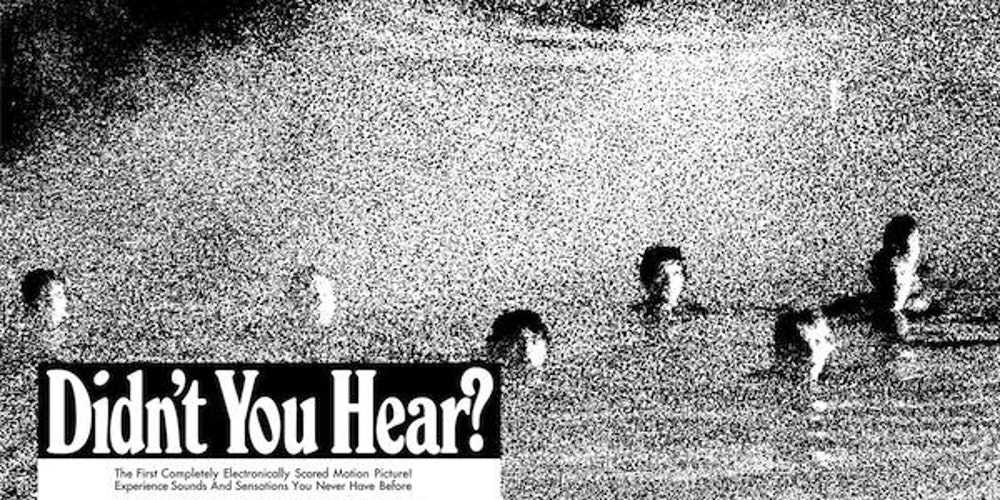On June 20, 1969, Mort Garson began his 45th year on Earth hunkered around a television set with family and friends. It was, after all, the day of the Apollo 11 moon landing, but for Garson, the moment held special significance. Having been asked by CBS to compose a six-and-a-half minute piece to accompany their coverage of the moonwalk, he spent his birthday soundtracking magnificent desolation. “The only sounds that go along with space travel are electronic ones,” Garson opined on the eve of the event, watched by 600 million people globally. “I used a big, symphonic sound for the blastoff and a pretty melody for the moon.”
Garson, who composed until his death in 2008, hadn’t always specialized in scoring feats of human endeavor. A classically trained Juilliard School graduate, the Canadian composer’s bread and butter was turning out jingles, TV themes, and the occasional hit like Ruby & the Romantics’ “Our Day Will Come.” Encountering the then-new Moog synthesizer—and its inventor Bob Moog—at a convention in early 1967 flipped the script entirely. A smitten Garson forked out $15,000 for one of the first models ever made and turned his Laurel Canyon home studio into his personal mission control center.
Reflecting on the state of electronic music at the time, musician and author Thom Holmes said, “No one really knew what direction to go in. The Moog did not come with an operator’s manual, literally.” As the ’60s fell out of view, and with no handbook to rip up, Garson could only be impeded by a lack of imagination. Luckily, he was a futurist invested in the radical potential of electronic sound. His modular explorations—fine-tuned on the cozy pocket symphonies of his 1976 opus Mother’s Earth Plantasia—conjured up a synthetic sphere where far-out filters and raw electricity went light-years beyond any lunar surface. “He was really fascinated by the newness and what this machine could do and how it sparked his creativity,” his daughter Day Darmet recalled. “I think it woke him up from a world of commercialism.”
Originally only available at screenings in Seattle, Garson’s soundtrack to 1970 oddity Didn’t You Hear? doubled as one of first all-electronic film scores. Without context, vocalist Tom Muncrief's histrionics on the title track are jarring. But they are just a blip. “Death Talk and Jeep Approach” and “Sail! Sail!”—which foreshadows the corroded synth doom of Iggy Pop’s “Mass Production”—more than make amends. On the former, Garson summons an eerie tundra of panned whooshes and pitch-shifted bells the likes of which would have made the BBC Radiophonic Workshop proud. On a gentler note, the cutesy arpeggios of “Walk to the Other Side of the Island” is a hint of wholesome themes to come.
Owing in part to the box-office success of movies like Rosemary’s Baby and Witchfinder General, the occult crept into pop culture consciousness in the late ’60s. Majors like Capitol and Warner Bros. capitalized by releasing schlocky, spoken-word LPs like Witchcraft – Magic: An Adventure in Demonology. By 1971, Garson offered up some credibility. Marketed as a feature-length interpretation of esoteric phenomena, Black Mass saw him adopt the moniker Lucifer for an experiment in supernatural electronics. Titles like “ESP” and “Witch Trial” leave nothing to the imagination, but, like peaks “Solomon’s Ring” and “Exorcism,” they furnish the mind’s eye with imagined visuals, pairing rich melodies with white-noise bursts and contorted clangs.
Though listeners are assured Black Mass “takes its subject matter seriously,” there’s a classic Garsonian comfort to the screwy spirit underpinning it all. It’s a niche Garson resumed when he became a tour guide to the paranormal for a second time in 1975. His sole release under the name Ataraxia, The Unexplained (Electronic Musical Impressions of the Occult) is a trove of dark ambience (“Sorcerer”) and a nostalgia bath of bubbling basslines (“I Ching”). Influence-wise, it’s a textbook case of give and take: The unearthly, new-age skulk of “Deja Vu” is essentially “Tubular Bells” 2.0. Opener “Tarot,” meanwhile, has the kind of driving 32nd-note pulse that John Carpenter would wield on his Halloween theme three years later.
But the crowning glory is the first-time issue of Music From Patch Cord Productions. Raiding the archives, it spans subtly alternate takes of Plantasia tracks (a thrilling, extra-syncopated “Ode to an African Violet”) and hallucinatory sci-fi tunes like “Son of Blob Theme.” The album’s stylistic outliers are also their best. The disco funk of “Dragonfly,” which plays like a dreamworld duet between Pac-Man composer Toshio Kai and Yellow Magic Orchestra, exists whole planes apart from “Cathedral of Pleasure.” A paean to physical empowerment, the latter calls to mind Jenny Hval musing over Pino Donaggio’s wistful main title from Carrie.
Looking back, it’s obvious Mort Garson was a jack of many trades and a master of one. At the dials and keys of his beloved Moog modular, his marriage of the fantastical with the everyday eluded comparison. Whether for outer space, or the quiet domesticity of home, he zoomed out to places unseen, or honed in on the familiar, bringing it to levels unconsidered. And just like he did on that momentous day back in 1969, Garson, Lucifer—whatever you want to call him—still guides his listener to not simply see the future, but look beyond it.
Buy: Rough Trade
(popitrecords.com.)
Catch up every Saturday with 10 of our best-reviewed albums of the week. Sign up for the 10 to Hear newsletter here.
